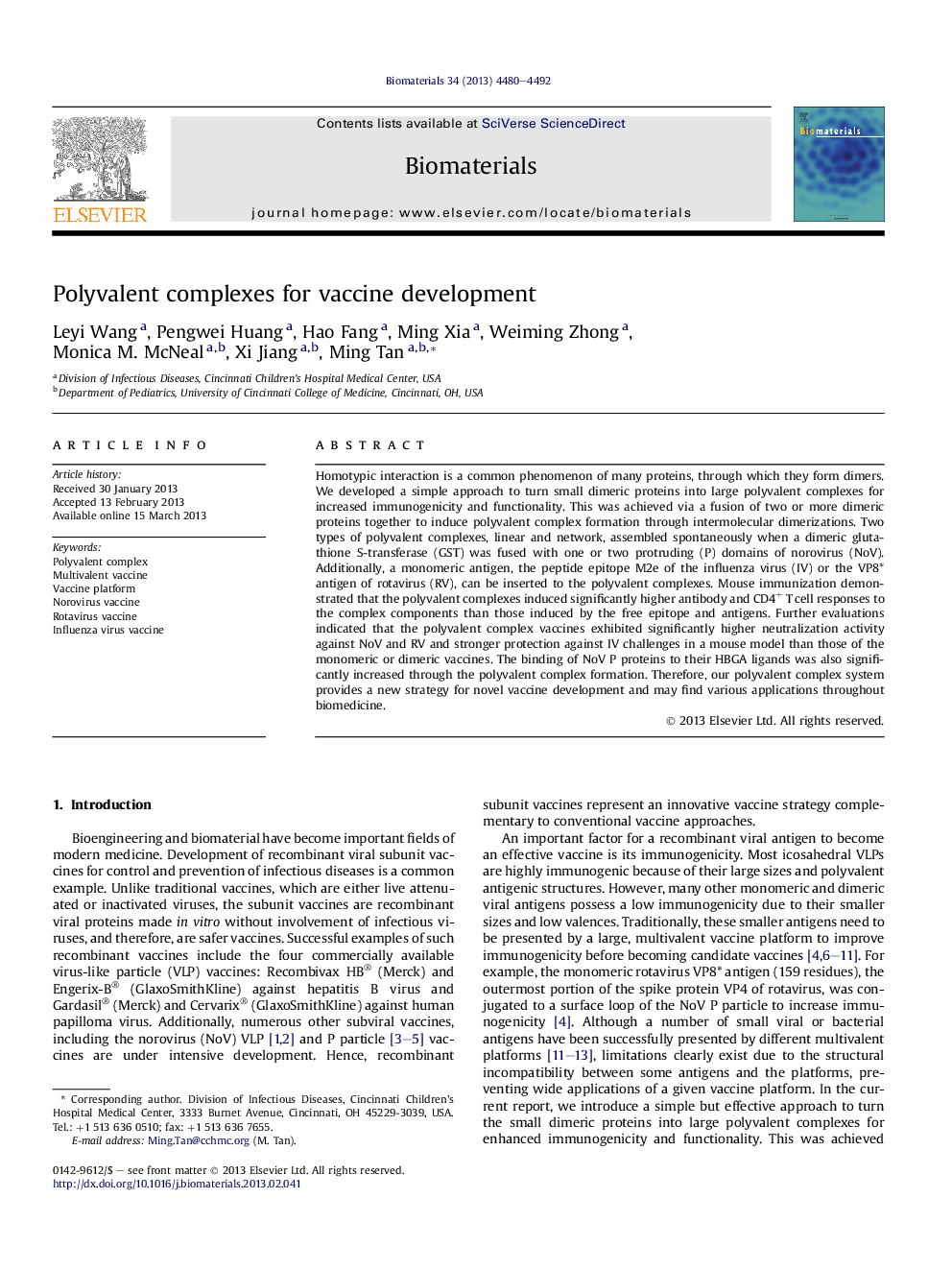| کد مقاله | کد نشریه | سال انتشار | مقاله انگلیسی | نسخه تمام متن |
|---|---|---|---|---|
| 6124 | 463 | 2013 | 13 صفحه PDF | دانلود رایگان |

Homotypic interaction is a common phenomenon of many proteins, through which they form dimers. We developed a simple approach to turn small dimeric proteins into large polyvalent complexes for increased immunogenicity and functionality. This was achieved via a fusion of two or more dimeric proteins together to induce polyvalent complex formation through intermolecular dimerizations. Two types of polyvalent complexes, linear and network, assembled spontaneously when a dimeric glutathione S-transferase (GST) was fused with one or two protruding (P) domains of norovirus (NoV). Additionally, a monomeric antigen, the peptide epitope M2e of the influenza virus (IV) or the VP8* antigen of rotavirus (RV), can be inserted to the polyvalent complexes. Mouse immunization demonstrated that the polyvalent complexes induced significantly higher antibody and CD4+ T cell responses to the complex components than those induced by the free epitope and antigens. Further evaluations indicated that the polyvalent complex vaccines exhibited significantly higher neutralization activity against NoV and RV and stronger protection against IV challenges in a mouse model than those of the monomeric or dimeric vaccines. The binding of NoV P proteins to their HBGA ligands was also significantly increased through the polyvalent complex formation. Therefore, our polyvalent complex system provides a new strategy for novel vaccine development and may find various applications throughout biomedicine.
Journal: Biomaterials - Volume 34, Issue 18, June 2013, Pages 4480–4492